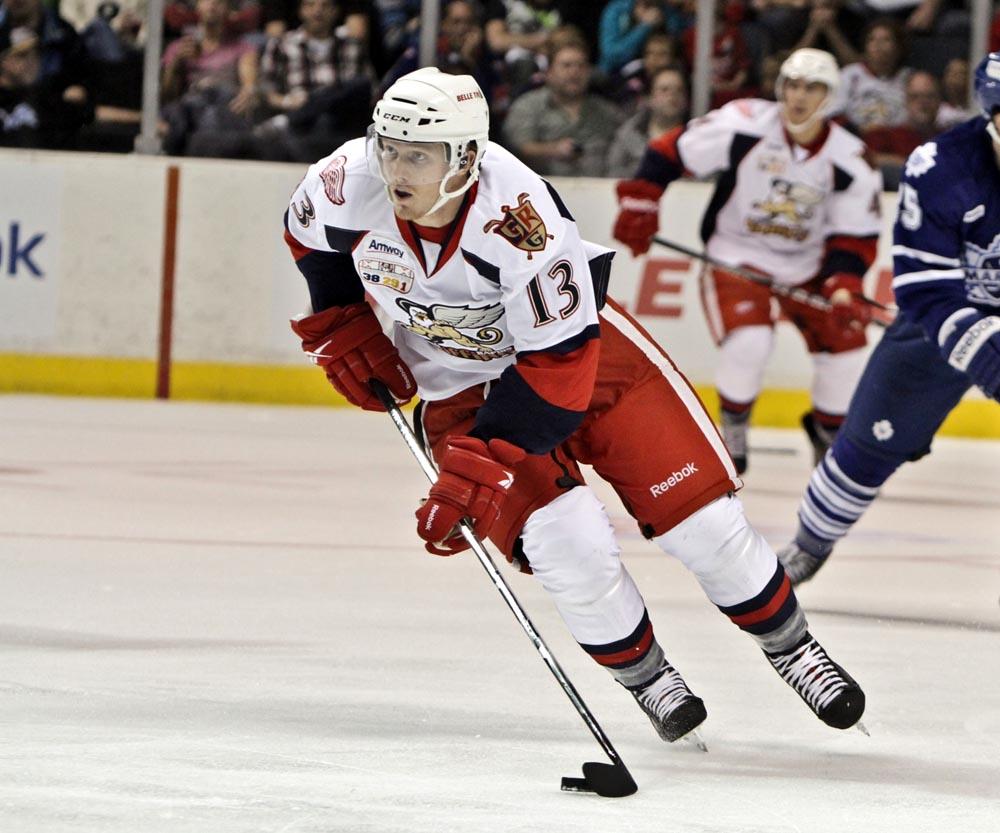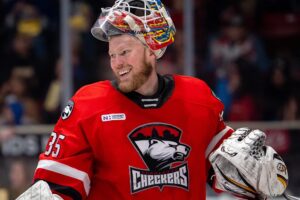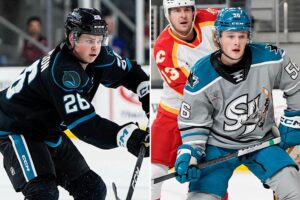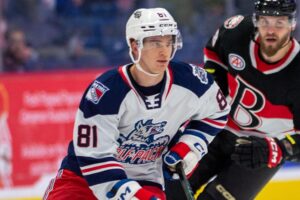by Mark Newman || AHL On The Beat Archive
If Gustav Nyquist lived his life strictly by the numbers, he would probably be playing hockey in the Swedish Elite League, not North America.
But the 22-year-old Detroit Red Wings prospect took a different route than most players his age in Sweden. Taking stock of his circumstances, he decided he wanted to leverage his odds.
The safe bet would have been to stay in Sweden and play in the top league there for a few years until he was ready to ply his trade in the National Hockey League.
Nyquist, however, was smart enough to know that you can’t always bank on things working out exactly as you plan. So he intended to hedge his bets and continue to pursue an education while playing hockey.
“In Sweden, you can’t study and play hockey at the same time because we don’t have university sports like here,” said Nyquist, who finished third academically in his high school class. “I wanted to try something new. I wanted to go a different route.”
He decided he wanted to play college hockey in North America, a decision fully supported by his parents. After all, his orthopedic surgeon father, Fredrik, and architect mother, Eva, had experienced the benefits of a good education themselves.
“Obviously, you can’t play hockey your whole life, even though you want to,” Nyquist explained. “I’ve always felt that an education was something good to have to fall back on.”
Nyquist had his choice of a number of American colleges. As luck would have it, he decided on the University of Maine, known as much for having one of the best hockey programs in the country as for its forestry, engineering and business schools.
In addition to boasting two national championships (1993 and 1999), the school counts Paul Kariya and Red Wings goalie Jimmy Howard among its alumni.
Going to Maine, the only land-grant university located on an island (Marsh Island, between the Penobscot and Stillwater rivers), required some adjusting on the part of Nyquist, who hails from the metropolis of Malmo, the third most populous city in Sweden. By contrast, Maine is situated in Orono, a small, insular college town where seemingly everyone is connected to the school in some fashion.
“There were adjustments, both off and on the ice,” said Nyquist, a self-confessed “city boy” who nonetheless grew to appreciate the quaintness of the university town. College life was another matter altogether.
“Suddenly you’re taking classes in English, not Swedish, and that’s a little different,” he said. “You have to learn how to budget your time off the ice because you have homework and you need to study. I think it makes you grow up a little faster.”
Acclimating his play to the smaller rinks in North America also took some time, perhaps a couple of months by his estimation, but Nyquist capitalized on his decision.
At Maine, Nyquist excelled both in the classroom and on the ice. He was a fixture on the Dean’s List as a straight-A student. His major was finance, a subject that had long intrigued him.
“I like following my own portfolio,” said Nyquist, whose list of holdings covers both the Swedish stock exchange and Wall Street. “I like to keep track of it, and it’s something to do away from the rink.”
Drafted by the Red Wings in the fourth round of the 2008 NHL Entry Draft, Nyquist made sure his stock on the ice went up, growing stronger and capitalizing on the ample ice time he was afforded by the coaches.
He led the nation in scoring during 2009-10 and twice was a finalist for the Hobey Baker Award, the honor given to the best college player in the nation. “It was a huge honor to be considered two years in a row,” he said.
The major letdown of his time at Maine was that the Black Bears never qualified for the postseason during his time at the school. “It’s obviously a disappointment when your goal is to reach the NCAA tournament,” he said.
After his junior year, Nyquist decided it was time to cash in.
“I felt like I was ready for a new challenge,” he said, explaining his decision to leave school and sign a two-year entry level contract with the Red Wings. “Detroit is giving me a big opportunity here,” he said. “It’s been my dream since I was a little kid to be part of an organization like Detroit, and I couldn’t be happier.”
The Red Wings, in fact, have been Nyquist’s favorite team since he was a boy, which is not surprising given that the roster is loaded with Swedes – Nicklas Lidstrom, Henrik Zetterberg, Johan Franzen, Tomas Holmstrom, Niklas Kronwall, Jonathan Ericsson and Fabian Brunnstrom.
He attended his first Red Wings training camp this fall and wasted little time in making an impression. After a solid performance in the prospects tournament, he turned a few heads during the team’s intra-squad scrimmages.
"Nyquist is a real good hockey player,” Red Wings head coach Mike Babcock told the assembled throng of media. “He’s like Pav (Datsyuk) in that he skates faster with the puck than he does without it, creates space every time he’s on the ice. He’s professional with and without the puck. He’s an NHL player.”
The Griffins gave Nyquist a brief audition late last season when he appeared in eight games after the completion of Maine’s season. He tallied one goal and three assists with the team to close out the 2010-11 season.
Griffins head coach Curt Fraser certainly liked what he saw.
“He’s got everything – skilled, fast, a real good playmaker,” Fraser told Grand Rapids Press beat writer Michael Zuidema. “I don’t think you’re one of the top players in college hockey by accident, and this kid did it for three years straight. He was a welcome addition to our team.”
The eight-game stint set the stage for Nyquist to assume a larger role on the Griffins this season. With five of the top 10 scorers from last season’s team departing over the summer, including leading scorer Ilari Filppula and former captain Jamie Tardif, there was some room on top of the Grand Rapids depth chart for newer blood.
Nyquist has made an immediate impact, tallying three goals and three assists in the Griffins’ first seven games after starting the season with points in four straight games. Alongside newcomer Chris Conner and countryman Joakim Andersson, he comprises a large part of the first line and top power-play unit.
Nyquist thinks the late-season stay provided him with invaluable insight into his transition to full-time pro hockey. “It was a good experience to get in those eight games,” he said. “It’ll help for sure, because I got a taste and I now know what to expect.”
Of course, there could be more ups and downs than the volatile Dow Jones Industrial Average. Fraser expects that Nyquist’s assets may not be entirely evident at the outset, as he made need time to reach his full potential.
“He’s a gifted player. He does some real good things, but he’s a young man,” Fraser said. “College hockey and the American League are a lot different. He’s just got to get a little experience and time, and as soon as he does that, he’ll be gold.”
Nyquist is prepared to invest every ounce of his being into proving that he is, indeed, an NHL player.
“I’m just going to come to the rink every day and work as hard as possible to do my best,” he said. “I want to help us get into the playoffs and make some noise. That’s definitely the first goal.”






































